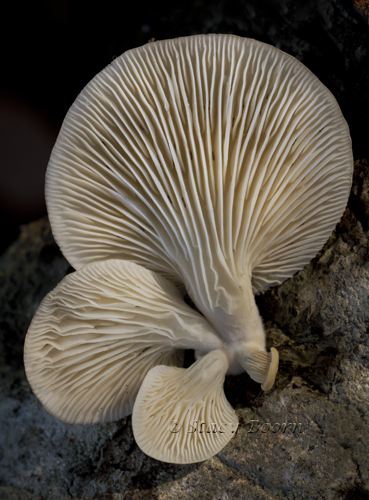 The most sought after popular wild mushroom, the Boletus edulis, is different from other mushrooms. The Boletes have pores rather than gills on the underside of the cap. This spore-bearing area resembles and acts like a sponge. The Italian name porcini is a more familiar name if a restaurant or market is your primary location to spot them. But in the field they are simply the King/Queen Bolete.
The most sought after popular wild mushroom, the Boletus edulis, is different from other mushrooms. The Boletes have pores rather than gills on the underside of the cap. This spore-bearing area resembles and acts like a sponge. The Italian name porcini is a more familiar name if a restaurant or market is your primary location to spot them. But in the field they are simply the King/Queen Bolete.
Boletus edulis is indeed impressive and hardy to behold, with its fat, bulbous stem decorated at the top with a network of lacy white veins and its nourishing brown cap held high above the forest floor. There are many other types and colors of the bolete.
Here on the west coast several days after the first heavy rains fall, often in September or October, young forms begin mounding up the pine needles under the trees.
Boletes are mycorrhizal, forming relationships with trees. There has been little success cultivating boletes, so they are always collected from the wild, making them uncommon and expensive in supermarkets. However, the good news for collectors is that because they are symbiotic with certain trees they will recur in the same places each year. So it is no surprise that mushroom “hunters†will not share their favorite locations. Fortunately one such collector let me peak into his bag after I made it clear I was only there to photograph them.
It is supposed to be easy to recognize a mushroom as a bolete, but identifying your bolete to species can be more difficult. This is an important step, because many boletes are either poisonous or simply not pleasant to eat. I will eat those from the farmers’ market, Mollie Stones ($29.00 per pound) or at certain restaurants. All the wild ones are there for the photographing! This way maybe a collector or two, after swearing me to secrecy, may show me her favorite sites.
One mushroom really lives up to its name—it looks, smells, and tastes like oysters. With virtually no stalk, this mushroom’s oyster-shaped caps usually grow in layers on dead deciduous wood, like clusters of oysters. I think I have identified this mushroom correctly, although I am not going to eat it to verify the find. I will let them be a feast for my eyes.
I love to photograph mushrooms because you can control the light ( with diffusion and reflection) and often turn over the log on which a particular specimen is growing. But it is not easy work and can often be quite frustrating! So don’t ask me too many questions while I am at work among them otherwise you might suspect I have discovered a new specimen – the crabby mushroom!
A tripod is a must and a kneeling pad and gardening gloves!


